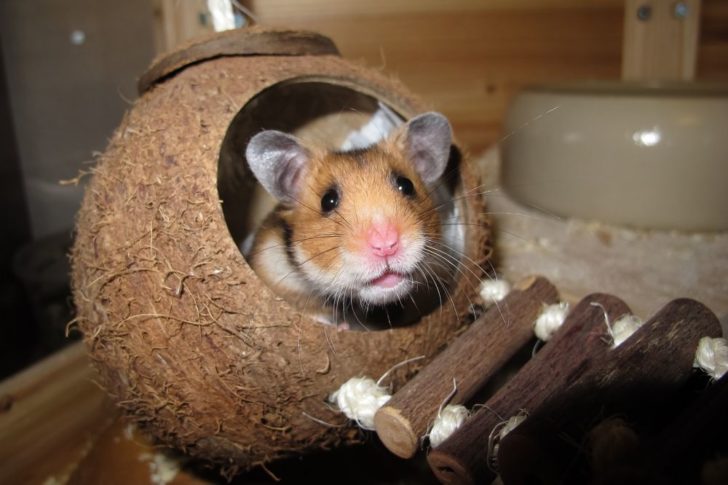Arabian hamsters, also known as Syrian hamsters, are a popular choice for pet owners around the world


These small, adorable creatures are known for their friendly and gentle nature, making them ideal companions for both adults and children.
In this comprehensive article, we will provide an in-depth overview of Arabian hamsters, including their origins, characteristics, types, and popularity as pets. We will also delve into quantitative measurements regarding their size, lifespan, and dietary needs. Additionally, we will discuss the differences between various Arabian hamster breeds, their unique traits, and how they can vary in terms of appearance and behavior.
Arabian hamsters are native to the arid regions of Syria, Turkey, and the surrounding areas. They are solitary animals and should always be housed alone to prevent any aggressive behavior. It is essential to provide them with ample space, a suitable cage, and enriching toys to keep them mentally and physically stimulated.
There are several types of Arabian hamsters, including the long-haired, short-haired, and satin varieties. The long-haired hamsters have luxurious fur that requires regular grooming to prevent matting and tangling. On the other hand, short-haired hamsters have a sleek and shiny coat that is easier to maintain. Satin hamsters, as the name suggests, have a satin-like sheen to their fur, which gives them a unique and attractive appearance.
Among these types, the short-haired Syrian hamsters are the most popular and widely available. They come in various colors, including golden, cinnamon, black, and tortoiseshell, making them visually appealing to pet owners. The long-haired and satin varieties are less common but equally sought after by hamster enthusiasts.
Now let’s delve into some quantitative measurements when it comes to Arabian hamsters. On average, these small rodents measure about 6 to 7 inches in length, with males being slightly larger than females. They typically weigh between 4 and 8 ounces, depending on their age and genetics.
In terms of lifespan, Arabian hamsters have an average longevity of 2 to 3 years. However, with proper care and a healthy diet, some individuals have been known to live up to 4 years or more. It is crucial to provide them with a balanced diet consisting of fresh fruits and vegetables, high-quality hamster pellets, and occasional treats.
While Arabian hamsters belong to the same species, there can be noticeable differences between individuals. These variations can include coat color, pattern, and temperament. Some hamsters may be more sociable and enjoy human interaction, while others may be more timid and prefer to observe from a distance. It’s essential to spend time getting to know your hamster’s unique personality and adjust your handling and interaction accordingly.
Lastly, let’s explore the historical background of Arabian hamsters and the pros and cons associated with different breeds. Syrian hamsters were first discovered in the wild in the 18th century and soon became popular as pets around the world. Their docile nature and adaptability to captivity made them a favorite choice among households.
One advantage of Arabian hamsters is that they are relatively low maintenance pets. They are clean animals that groom themselves regularly, which reduces the need for frequent bathing. Additionally, their size and ease of handling make them suitable for both adults and children.
However, it’s essential to note some potential drawbacks. Due to their solitary nature, Syrian hamsters may become aggressive towards other hamsters if housed together, leading to fights and injuries. Additionally, their bedding and cage maintenance can be time-consuming, as they tend to scatter their food and create nests using bedding materials.
In conclusion, Arabian hamsters are delightful companions and fascinating creatures to admire. Their friendly demeanor, wide variety of breeds, and manageable size make them highly appealing pets for individuals and families alike. By understanding their origins, characteristics, quantitative measurements, and differences between breeds, potential owners can make informed decisions when welcoming an Arabian hamster into their homes.
Overall, this article aims to provide a comprehensive, high-quality resource for anyone interested in learning more about Arabian hamsters. Whether you’re a hamster enthusiast or considering getting one as a pet, we hope that this article has provided valuable insights and information to enhance your understanding of these charming rodents.
FAQ
What are the different types of Arabian hamsters?
What is an Arabian hamster?
What is the average lifespan of an Arabian hamster?
Fler nyheter
Upptäck Sverige från en vildare sida: Elchparker
These small, adorable creatures are known for their friendly and gentle nature, making them ideal companions for both adults and children. In this comprehensive article, we will provide an in-depth overview of Arabian hamsters, including their origin...
Karl Lindgren
11 mars 2024
Djursjukvård: En oumbärlig del i ditt husdjurs liv
These small, adorable creatures are known for their friendly and gentle nature, making them ideal companions for both adults and children. In this comprehensive article, we will provide an in-depth overview of Arabian hamsters, including their origin...
Veronica Urena
04 mars 2024
Pannband för häst – En stilfull och funktionell accessoar
These small, adorable creatures are known for their friendly and gentle nature, making them ideal companions for both adults and children. In this comprehensive article, we will provide an in-depth overview of Arabian hamsters, including their origin...
Renate Degerth
14 februari 2024
Ridning i Stockholm: En guide till den ultimata upplevelsen
These small, adorable creatures are known for their friendly and gentle nature, making them ideal companions for both adults and children. In this comprehensive article, we will provide an in-depth overview of Arabian hamsters, including their origin...
Alice Pettersson
23 januari 2024











